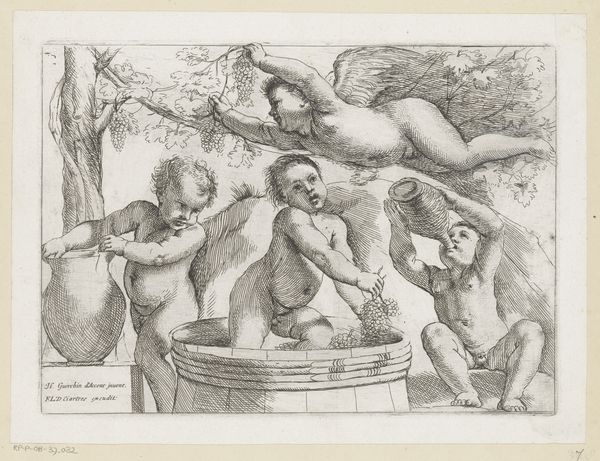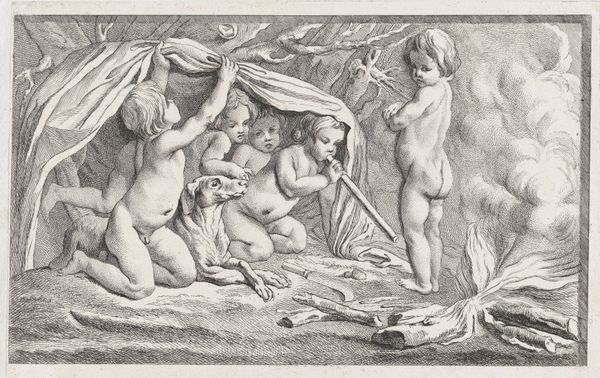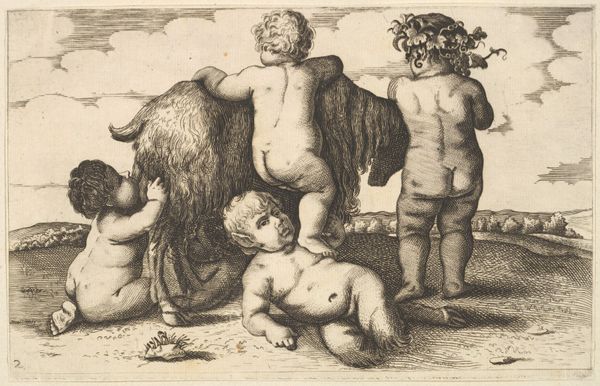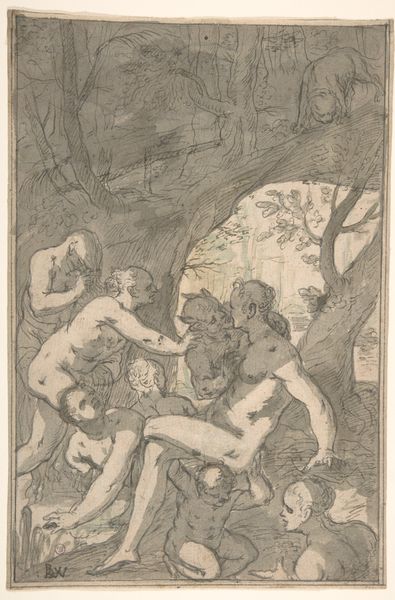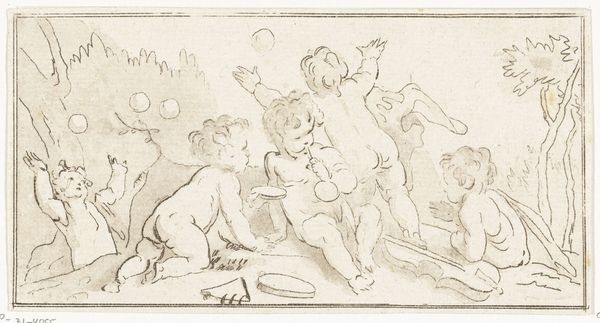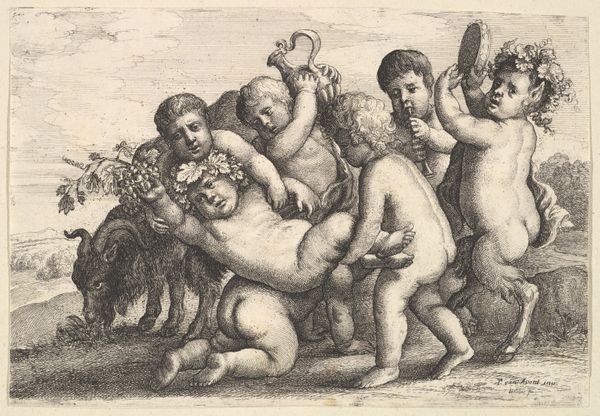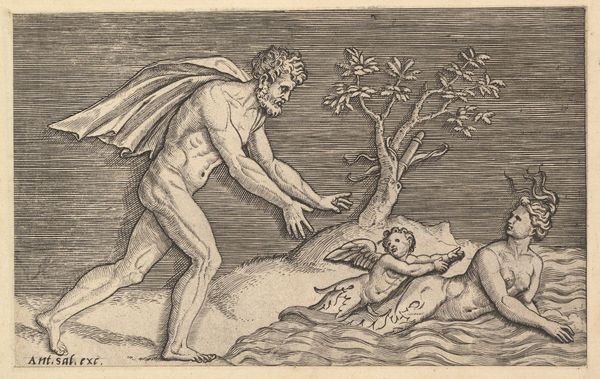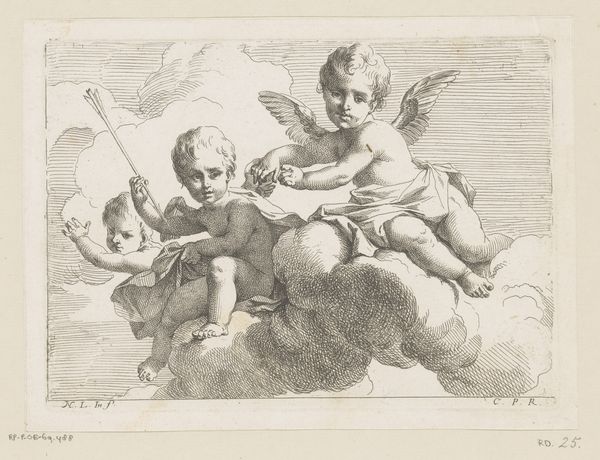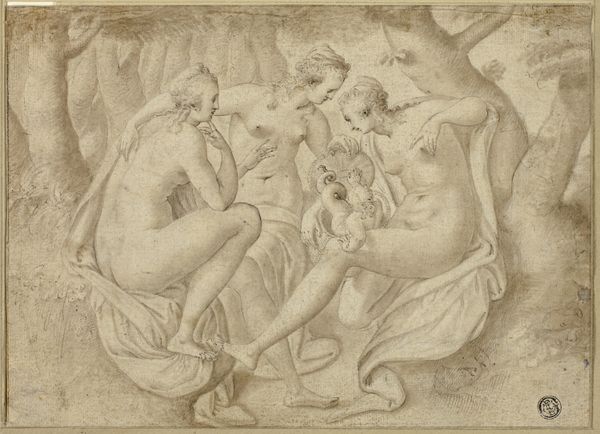
drawing, print, etching, ink
#
drawing
#
baroque
# print
#
etching
#
figuration
#
ink
#
pencil drawing
#
line
#
genre-painting
#
italian-renaissance
Dimensions: Mount: 10 13/16 × 20 5/16 × 20 5/16 in. (27.4 cm, 51.6 cm) Sheet: 7 15/16 × 11 1/8 in. (20.1 × 28.2 cm)
Copyright: Public Domain
Editor: This is "Four Putti Making and Drinking Wine" made sometime between 1615 and 1625, and it's attributed to Guercino. It looks like an etching. I'm immediately struck by the focus on labor – the kids are literally working the grapes. What can you tell me about it? Curator: I see a fascinating depiction of the means of production within this print. Guercino gives us insight into labor relations, albeit through the idealised form of putti. Think about it – this is not simply about cherubic figures enjoying wine; it is a portrayal of the very *making* of wine. What materials and actions are needed to create wine, and how does this contrast with, say, the consumption of luxury goods at the time? Editor: That's an interesting point. I was just seeing cute babies. So, you're saying that this print actually connects to broader issues of materiality and even social class? Curator: Precisely! This etching, being reproducible, was available to a wider audience than an oil painting. Therefore, Guercino is representing this laborious process, not to an elite necessarily, but to those who are maybe closer to modes of artistic production through printmaking and potentially the wine making process. Notice the detail in the rendering of the tub, the grape vines, and the children's bodies, the material world that these putti inhabit as workers is being explored. Editor: So the choice of printmaking as the medium allows for a dialogue with a broader social strata about consumption. I’ve never considered putti as labourers before! Curator: Yes! Consider the cost of production: the etching plate, the ink, the paper, and the skill of the printer. The print, then, becomes an artifact that embodies and circulates ideas of material value and labour. Editor: I see it now! It's amazing how a seemingly light-hearted scene can actually reveal so much about production and access. I’ll never look at Baroque art the same way! Curator: Exactly. Thinking about material processes can transform how we engage with images, prompting a deeper reflection on our own relationships to making and consumption.
Comments
No comments
Be the first to comment and join the conversation on the ultimate creative platform.
